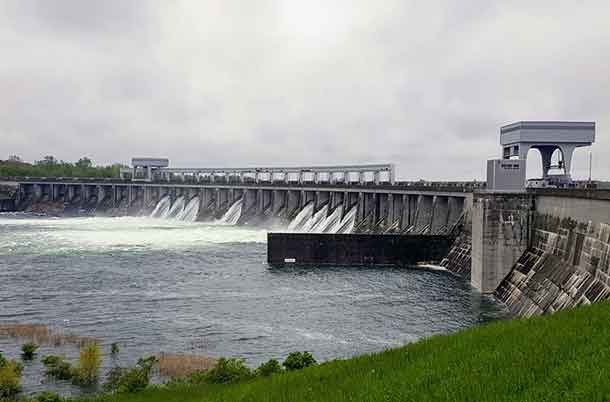
TORONTO – At its weekly conference call, the International Lake Ontario – St. Lawrence River Board decided to maintain the outflow from Lake Ontario at 10,200 m3/s (360,200 cfs) for at least another week to address high water levels and associated impacts throughout the system.
Water levels downstream on the St. Lawrence River near Montreal remain at nearly the same high levels seen since early May. Despite more heavy rain last week, the water level of Lake Ontario has remained relatively stable and continues to be within a couple of centimetres (1 inch) of its level two weeks ago.
The current outflow is equivalent to the historic maximum weekly average outflow from Lake Ontario which occurred in just two weeks previously, once each during the high water years of 1993 and 1998. The Board has been maximizing the outflows from Lake Ontario in consideration of balancing water levels upstream and downstream to minimize flood and erosion impacts to the extent possible. The Board is also considering options that would allow it to increase the outflow further, once downstream conditions permit.
Following the wet conditions in April and record rainfall during the first weeks of May, it has been generally drier across the Lake Ontario – St. Lawrence River basin. If these drier conditions continue, Lake Ontario outflows are expected to soon surpass inflows, at which time Lake Ontario’s water level will begin to decline. However, owing to the huge surface area and large volume of water on Lake Ontario, it will take several weeks to significantly reduce levels, and longer to return to the average water level for the time of year. The Board therefore advises continued caution, especially when onshore winds are predicted, as high water levels will persist for the weeks to come.
On 1 June 2017, Lake Ontario was 75.87 m (248.9 ft), 82 cm (32.3 inches) above its long-term average level for this time of year. The level at Lake St. Lawrence was about 28 cm (11.0 inches) above average, while the level at Lake St. Louis was about 22.49 m (73.8 ft), 108 cm (42.5 inches) above average. At Montreal Harbour, the level was 141 cm (55.5 inches) above average. Downstream, the flooding which has caused evacuations around Lake St. Peter is prolonged.
The Board continues to monitor the system and will confer again on 5 June 2017.






